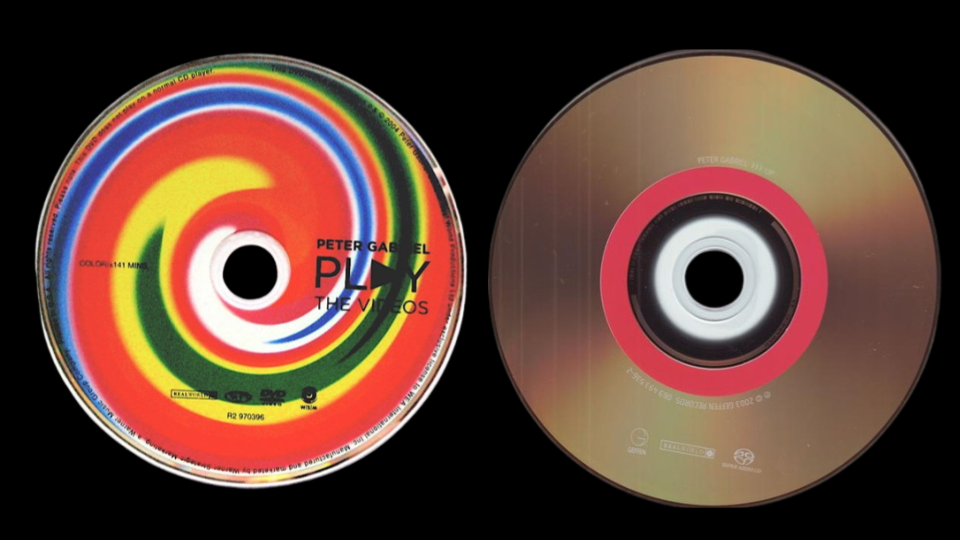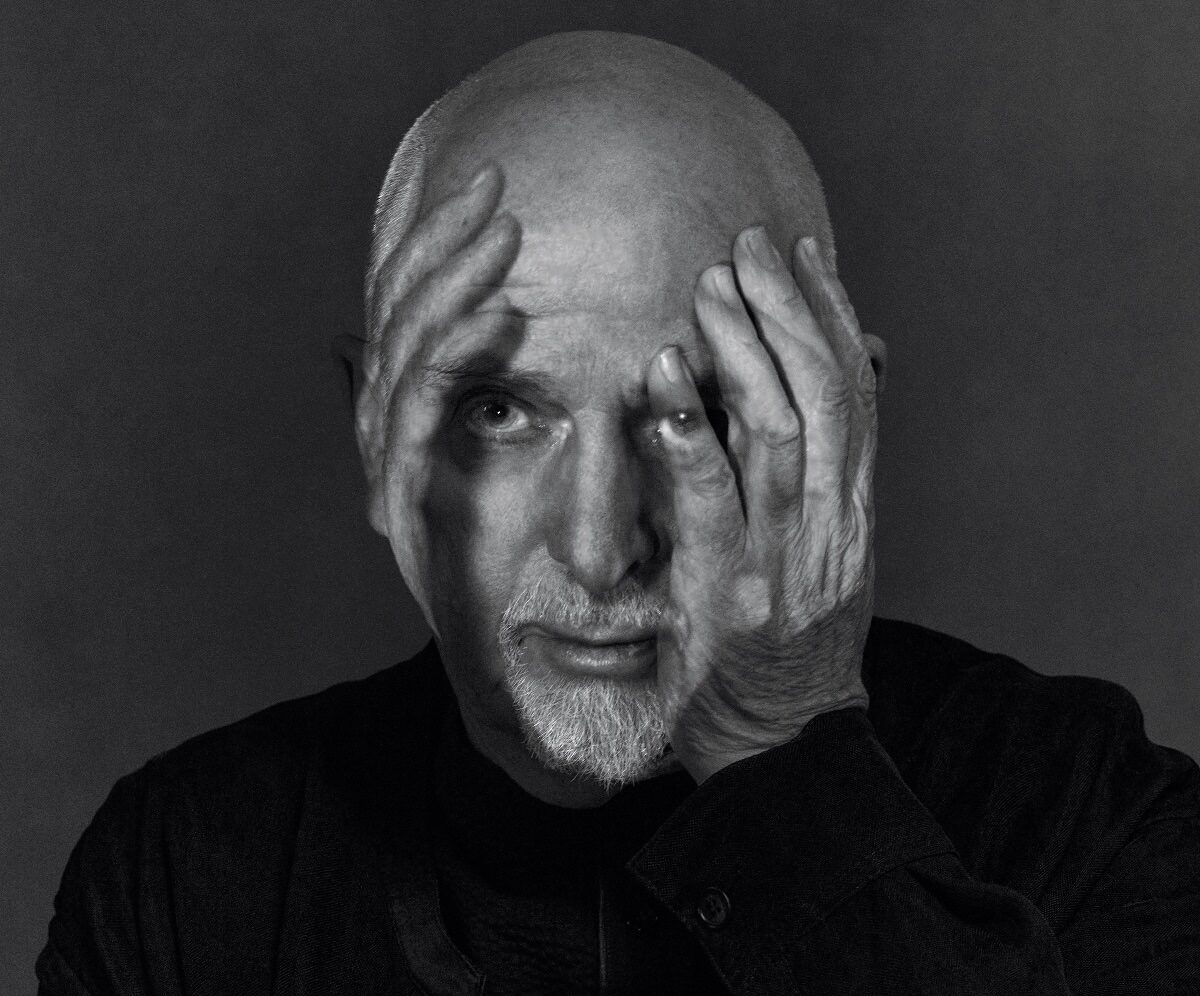i/o, Peter Gabriel’s long-awaited tenth studio album, is a project nearly three decades in the making. Though he’d originally planned to complete a follow-up to 2002’s Up by 2004, several years of touring and shifting focus towards other projects (such as 2010’s covers album Scratch My Back) would ultimately set back its release.
Gabriel had been in the process of writing and developing new material since the late-1990s, but recording for i/o would ultimately commence at Real World Studios during the Fall of 2021. The album features contributions from several longtime collaborators, including guitarist David Rhodes (Talk Talk, Kate Bush), drummer Manu Katché (Sting, Tears For Fears), bassist Tony Levin (King Crimson), and Brian Eno.
Much like Tears For Fears’ recent album The Tipping Point–another late-career masterwork–i/o often ruminates on melancholic themes of aging and loss. Some fans have criticized the somber tone of the album, but I felt there to be a really nice balance between introspective pieces like “Playing For Time” and “So Much” with upbeat tunes like “Road To Joy” and “Olive Tree.”

Once the recording sessions concluded in Summer 2022, acclaimed mixing engineers Mark 'Spike' Stent (Madonna, Green Day, Foo Fighters) and Tchad Blake (Sheryl Crow, The Black Keys, Suzanne Vega) were each asked to submit a mix.
Though the original intention was likely to create a composite of what were deemed the best versions of each song, Gabriel ultimately decided to release both mixes in their entirety–Stent’s ‘Bright-Side Mix’ and Blake’s ‘Dark-Side Mix’–and let listeners decide their preference.
The pros and cons of each rendition continue to be debated within the audiophile community, with some differences between the two patently obvious (intro to “Road To Joy”) and others more subtle. So far I tend to gravitate more towards the ‘Dark-Side Mix,’ but both stereo interpretations pale in comparison to the third version: Hans-Martin Buff’s ‘In-Side Mix’ in Dolby Atmos.
The ‘In-Side Mix’ is a completely unique interpretation of the album, not modeled after either stereo mix. It even includes unique instrumentation recorded explicitly for the purpose of enhancing the immersive experience, such as additional acoustic guitars in “Panopticom” and extra percussion in “The Court.”
“With Peter’s songs, I sometimes add things to the In-Side Mixes that aren’t in the stereo versions. This is done not because I see myself as a producer-in-waiting and he needs my input, but to make sure that his musical intention in the stereo mix works as impressively if not more so in Atmos. i/o is definitely closer to [the] idea of a record made specifically for the immersive format, as I can augment the recording to the point where it’s more effective and better than stereo.”
Hans-Martin Buff, September 2023
The ‘In-Side Mix’ is available to stream on Apple Music, Tidal, and Amazon Music, as well as on a Pure Audio Blu-Ray included in the three-disc set. It appeared for a time that the Atmos mixes would remain exclusive to the streaming services, so I’m thrilled that Real World Records opted to also release the album on Blu-Ray as the high-resolution TrueHD presentation is far superior sonically.
Though I’ve become somewhat familiar with the Atmos mixes from months of listening to the individual songs on Apple Music, interesting new details kept popping out on the Blu-Ray–like the falsetto vocal harmony in the front height speakers during the chorus of “Panopticom.” The ambient sound in the top speakers seemed to be most affected by the lossy codec used for streaming, whereas on the Blu-Ray you can much better perceive the pre-delay, decay and other characteristics of the reverbs.
The Atmos mix is just as intricate as the music itself, with each song approached in a unique way that brings out the best in the composition. The denser tracks like “The Court” and “Road To Joy” offer the active full-on immersive experience with instruments all around that listeners might expect, while the simpler piano-and-vocal songs like “Playing For Time” and “So Much” fill out the room in a more subtle fashion.
“...I’ve found that the hardest songs to do were the simpler ones because they’re so front punch-based. How do you make these sparser tracks sound natural in an everything-everywhere environment? Fortunately, I was there when they recorded the piano [for “So Much”] and put up some more mics so I could give it a really nice spacey quality in Atmos. If I only had a two-channel recording of that piano, how could I make it any better than stereo? It’s just a story being told with two participants.”
Gabriel’s voice interestingly appears in the front ‘phantom’ center rather than the actual center speaker, though little difference is appreciable from the sweet spot. I suspect this was done in order to improve binaural compatibility, but it could have been even more haunting to hear Gabriel’s voice isolated in the center speaker for those aforementioned sparser songs.
“The Court” is certainly a highlight of the immersive presentation, with harmonic percussion shifting all around the room, metallic ‘clangs’ in the rear, and backing vocals (“...and the court will rise”) coming in from above and behind. Tony Levin’s bass guitar appears in both the front and rear channels, but is conspicuously absent from the side surrounds.
“Playing For Time”–no doubt an homage to Randy Newman’s style–stands in stark contrast to the prior two songs, mostly abandoning the layering and pyrotechnics in favor of just vocals and piano. The orchestra subtly enters the piece, eventually building up the big ending (“one by one…”) with strings in all speakers and percussion moving around the room. There’s a particularly cool moment at around the four-minute mark where Gabriel’s vocal ‘woah’ sails around the height speakers.

Brian Eno’s worm-like percussion slithers all around and above throughout “Four Kinds Of Horses,” while orchestration fills out the rear and Gabriel’s voice commands the front soundstage. Another standout is perhaps my favorite track on the album, “And Still,” written for Gabriel’s mother. The track begins with chimes moving overhead, as the lush orchestration wraps all around the room and shakers rotate around the listener.
There’s another great moment at the beginning of the second verse (“I wander around the house…”) where the entire soundfield suddenly seems to shrink–with much of the instrumentation dropping out and a filter applied to Gabriel’s voice, creating the impression it’s coming out of an old transistor radio–and then expands back out again.
360-degree swirling pans are often cited as a gimmick in immersive music mixes, but Buff makes sparing and clever use of the effect throughout the album. The guitar line at the end of “Panopticom” gently floats around the room, as does the percussion at the end of “Playing For Time” and a synthesizer part during the bridge in “Road To Joy” (“thе engine stops and silence pours…”).
For those who haven't yet made the leap to Dolby Atmos and still inhabit the world of traditional discrete six-channel surround sound, fear not as the TrueHD/Atmos audio translates remarkably well to 5.1 surround. I tried listening to the Blu-Ray disc through the analog multichannel outputs of my Oppo BDP-103 into an old Pioneer VSX-D411 5.1 AVR (pre-HDMI!) and could easily have mistaken the result for a dedicated 5.1 mix.
Though the soundstage feels a bit smaller without the rear surround and height array contributing, all of Buff’s mixing decisions seem to remain intact–there were no balance oddities or missing/veiled instruments.
“When I make decisions, I’m not really thinking about the mode of presentation at all. It’s all about how to best present and draw the listener’s attention towards a musical event. I’m not about the speakers, the gimmicks, or the binaural cues or any of the technical stuff – it’s all about the music to me.”
It will be interesting to see if Peter Gabriel continues to release new songs in the coming months or years–he’s already performed a track called “What Lies Ahead” on tour that's meant for the next record–and if he sees fit to revisit older works from his back-catalog in Dolby Atmos. i/o and Up are the only two Gabriel albums that have received immersive mixes thus far, though several classic songs such as “Sledgehammer” and “In Your Eyes” from 1986’s So were remixed in 5.1 for the Play: The Videos hits compilation back in 2004.

Overall, i/o easily ranks among my top-three favorite new releases of 2023 (along with Steven Wilson’s The Harmony Codex and Bruce Soord’s Luminescence) and is undoubtedly one of the most impressive Atmos mixes issued thus far. If you have an Atmos-capable home theater, I'd go so far as to say it's demo material. The 2CD/Blu-Ray set is a must-own for fans of Peter Gabriel and immersive music.
Support IAA by purchasing the i/o 2CD/Blu-Ray edition via this link!

